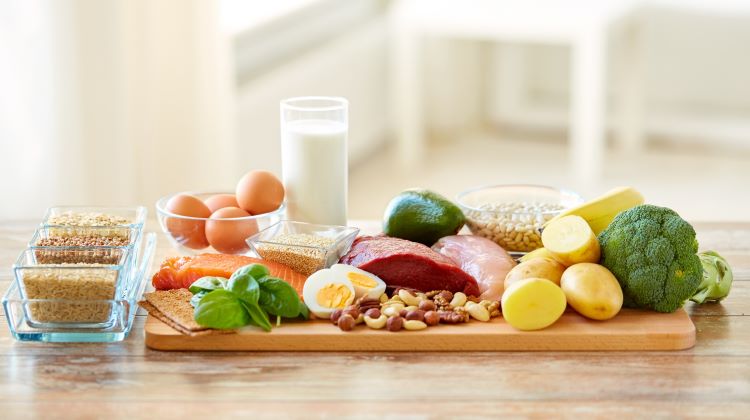High Protein Food: Meat, Chicken, Beef, and Farm Sources
High-protein food is central to many dietary plans, from muscle maintenance to satiety and recovery after exercise. Animal proteins such as meat, chicken, and beef are dense sources of complete amino acids, and choices about cuts and preparation affect both nutrient quality and calories. Understanding where these foods come from and how to combine them with other protein sources helps shape a balanced eating pattern.

This article is for informational purposes only and should not be considered medical advice. Please consult a qualified healthcare professional for personalized guidance and treatment.
How does meat contribute to high-protein diets?
Meat is a concentrated source of complete protein, meaning it provides all nine essential amino acids the body cannot synthesize. Typical serving sizes of lean cuts deliver 20–30 grams of protein per 100 grams, depending on the type and trim. Beyond protein, meat supplies micronutrients commonly paired with protein needs—iron, zinc, B vitamins and creatine—nutrients that support energy metabolism and muscle function.
Not all meat is the same: fattier cuts increase calorie and saturated fat content, while leaner cuts keep protein high and calories lower. Cooking method also matters — grilling, roasting or broiling can preserve protein while reducing added fats compared with frying or heavy sauces. Including a variety of meat types helps maintain nutrient diversity in a high-protein approach.
What role does farm sourcing play in protein quality?
The farm where an animal was raised can influence nutrient profile, environmental footprint, and animal welfare outcomes. Pasture-raised or grass-fed systems sometimes yield meat with modest differences in fatty acid composition, such as higher omega-3s, and may affect flavor. Farm practices also determine antibiotic and hormone use, which are considerations for some consumers when selecting high-protein food in your area.
When evaluating farm-sourced meat, look for transparent labels and local services that can explain rearing methods and traceability. Local farm markets and cooperative butchers often provide information about animal diets, processing, and seasonal availability. These details help you weigh trade-offs between cost, nutrition, and sustainability in high-protein choices.
How to include food variety for balanced protein?
Relying solely on one type of meat can narrow nutrient intake and increase exposure to specific fats or processing byproducts. Combining animal proteins with plant-based protein foods — such as legumes, nuts, and whole grains — broadens vitamins, fiber, and phytonutrient intake while still meeting protein targets. For example, pairing chicken or beef with a lentil salad or quinoa can increase overall dietary fiber and micronutrient density.
Meal planning also supports balance: distribute protein across meals to aid muscle protein synthesis and satiety. Practical strategies include prepping grilled chicken breasts for quick salads, using lean beef in stews with beans, and snacking on Greek yogurt or edamame. Variety in food sources mitigates monotony and helps meet both macronutrient and micronutrient needs.
Is chicken a good high-protein choice?
Chicken is widely used for its favorable protein-to-calorie ratio, especially skinless white meat which tends to be lower in fat. A 100-gram portion of roasted skinless chicken breast typically provides around 30 grams of protein, making it a convenient option for people tracking intake. It’s versatile in recipes, easy to portion, and often available from both conventional suppliers and farm-based producers.
Food safety and preparation are important: cook chicken to recommended internal temperatures and avoid cross-contamination. Sourcing chicken from farms that disclose feeding and handling practices can align nutritional preferences with concerns about antibiotic use or local animal husbandry. Incorporating chicken into mixed dishes with vegetables and whole grains increases nutrient breadth while keeping protein intake high.
How does beef compare for protein content?
Beef commonly has comparable protein density to other meats but varies by cut and fat content. Lean cuts such as sirloin or top round provide substantial protein per serving with lower fat than marbled cuts like ribeye. Besides protein, beef is a notable source of heme iron and vitamin B12, which are important for oxygen transport and neurological function — nutrients that can be less abundant in some plant-forward diets.
Portion control and cut selection are key to aligning beef consumption with health goals. Choosing trimmed, lean cuts, trimming visible fat, and using cooking methods that reduce added fats can keep calorie and saturated fat intake in check. Balancing beef servings across a week with other protein foods supports a diverse nutrient profile while leveraging beef’s strengths as a high-protein food.
Conclusion
High-protein food choices span a range of meat options, from chicken to beef, and are shaped by farm sourcing, cut selection, and cooking methods. Combining animal proteins with plant-based foods enhances nutrient balance, and informed choices about sourcing and portion size help align protein goals with broader dietary and sustainability preferences. For individualized nutrition guidance or health conditions affecting protein needs, consult a qualified healthcare professional.






